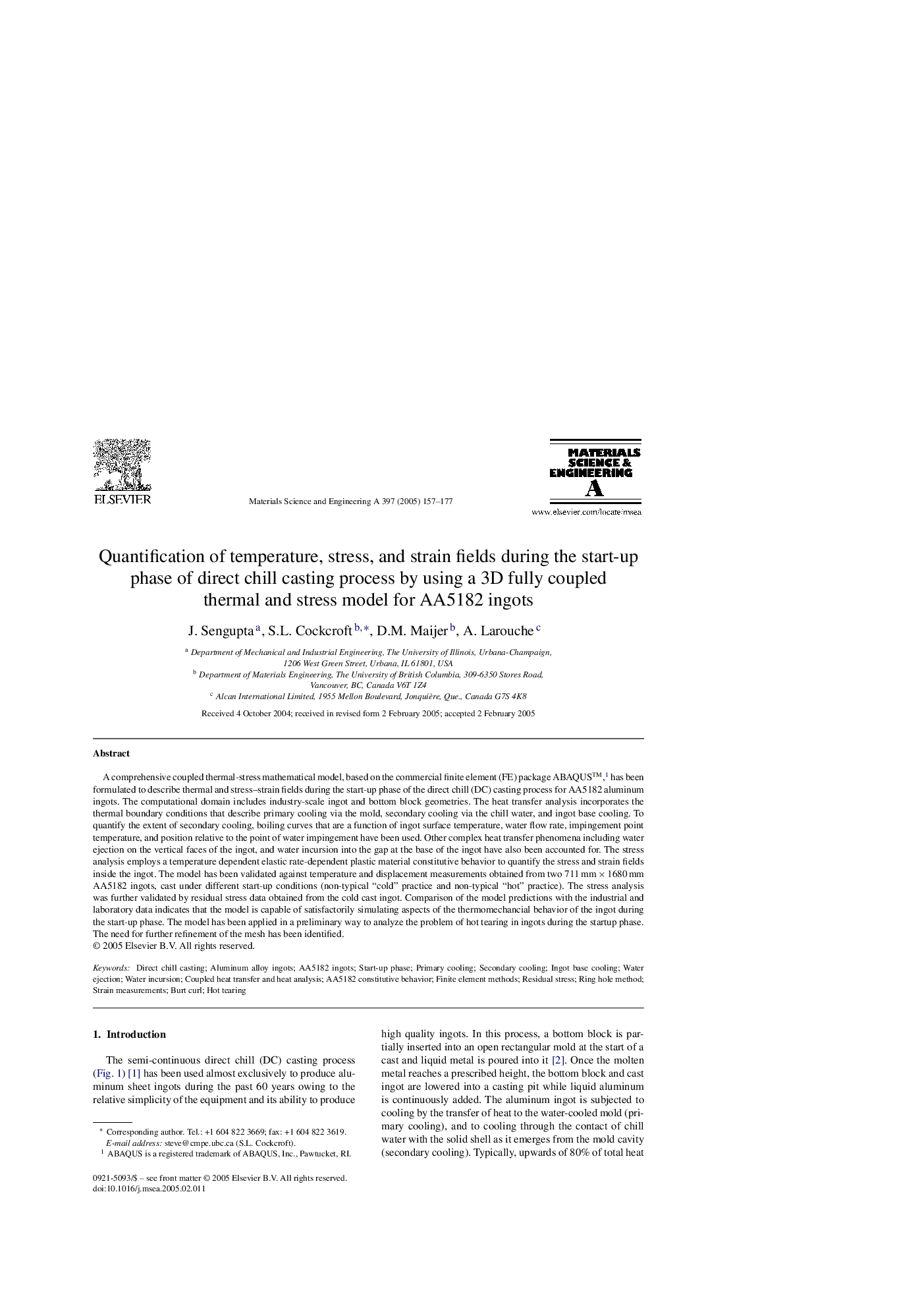| کد مقاله | کد نشریه | سال انتشار | مقاله انگلیسی | نسخه تمام متن |
|---|---|---|---|---|
| 9796285 | 1514944 | 2005 | 21 صفحه PDF | دانلود رایگان |
عنوان انگلیسی مقاله ISI
Quantification of temperature, stress, and strain fields during the start-up phase of direct chill casting process by using a 3D fully coupled thermal and stress model for AA5182 ingots
دانلود مقاله + سفارش ترجمه
دانلود مقاله ISI انگلیسی
رایگان برای ایرانیان
کلمات کلیدی
موضوعات مرتبط
مهندسی و علوم پایه
مهندسی مواد
دانش مواد (عمومی)
پیش نمایش صفحه اول مقاله

چکیده انگلیسی
A comprehensive coupled thermal-stress mathematical model, based on the commercial finite element (FE) package ABAQUSâ¢,1 has been formulated to describe thermal and stress-strain fields during the start-up phase of the direct chill (DC) casting process for AA5182 aluminum ingots. The computational domain includes industry-scale ingot and bottom block geometries. The heat transfer analysis incorporates the thermal boundary conditions that describe primary cooling via the mold, secondary cooling via the chill water, and ingot base cooling. To quantify the extent of secondary cooling, boiling curves that are a function of ingot surface temperature, water flow rate, impingement point temperature, and position relative to the point of water impingement have been used. Other complex heat transfer phenomena including water ejection on the vertical faces of the ingot, and water incursion into the gap at the base of the ingot have also been accounted for. The stress analysis employs a temperature dependent elastic rate-dependent plastic material constitutive behavior to quantify the stress and strain fields inside the ingot. The model has been validated against temperature and displacement measurements obtained from two 711 mm Ã 1680 mm AA5182 ingots, cast under different start-up conditions (non-typical “cold” practice and non-typical “hot” practice). The stress analysis was further validated by residual stress data obtained from the cold cast ingot. Comparison of the model predictions with the industrial and laboratory data indicates that the model is capable of satisfactorily simulating aspects of the thermomechancial behavior of the ingot during the start-up phase. The model has been applied in a preliminary way to analyze the problem of hot tearing in ingots during the startup phase. The need for further refinement of the mesh has been identified.
ناشر
Database: Elsevier - ScienceDirect (ساینس دایرکت)
Journal: Materials Science and Engineering: A - Volume 397, Issues 1â2, 25 April 2005, Pages 157-177
Journal: Materials Science and Engineering: A - Volume 397, Issues 1â2, 25 April 2005, Pages 157-177
نویسندگان
J. Sengupta, S.L. Cockcroft, D.M. Maijer, A. Larouche,